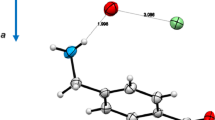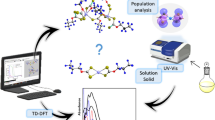Abstract
Bond stretch isomerism, for which the molecular conformations differ only in the length of one or more bonds, is often difficult to evidence on purely experimental grounds. Quantum chemical modelling allows to make a clear distinction between the effects of an instability, either of steric, electronic, or magnetic origin, inherent to the molecular system and those that should be assigned to the molecular environment. DFT calculations carried out on compounds of the type MII 3(dpa)4Cl2 (M=Co, Cr; dpa=dipyridylamide) show that the unprecedented structural variability observed in these complexes should be related to the electronic structure of the molecule itself. In the case of Co3(dpa)4Cl2, a single minimum corresponding to the symmetric metal framework observed in the orthorhombic crystal was characterized on the doublet ground state potential energy surface. The presence of a unique energy minimum for the ground state rules out the possibility for bond stretch isomerism. However, a spin transition from doublet to quartet shifts the equilibrium geometry towards the unsymmetrical structure characterized at room temperature in the tetragonal crystal. The quintet ground state of Cr3(dpa)4Cl2 also corresponds to a symmetric equilibrium geometry, but a second quintet state corresponding to a slightly higher energy and a different spin coupling of the localized metal electrons breaks the symmetry of the metallic framework. If the relative energy of this second quintet state could be lowered by a change in the axial coordination, an instability favorable to bond stretch isomerism would be generated on the ground state potential surface. Finally, calculations carried out on some functionalized polyoxometalates suggest that the tuning of intramolecular redox processes involving polyoxoanions as rigid electron reservoirs could provide a route toward the design of chemical architectures displaying bond stretch isomerism.
Similar content being viewed by others
Author information
Authors and Affiliations
Corresponding author
Rights and permissions
About this article
Cite this article
Rohmer, MM., Bénard, M. Structural Versatility in Polyoxometalates and in Some Linear Trimetallic Complexes: An Electronic Interpretation. Journal of Cluster Science 13, 333–353 (2002). https://doi.org/10.1023/A:1020546915168
Issue Date:
DOI: https://doi.org/10.1023/A:1020546915168




